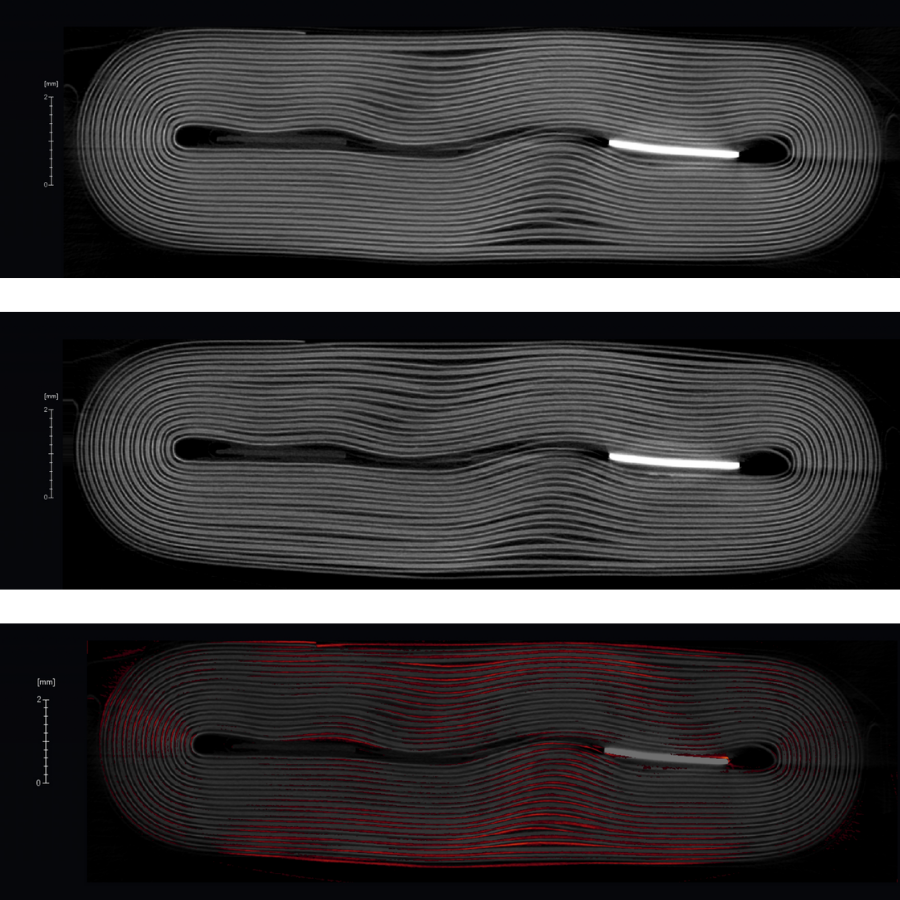Peering inside blown-up batteries
To understand how battery pillowing happens, CLS scientist Toby Bond performed highly detailed CT scans on lithium-ion batteries before and after pillowing.
This battery design has a lot of advantages, but, as Bond’s work shows, it also plays an important part in pillowing.
Imaging lithium ion batteries to improve performance and safety
Maybe you’ve noticed your phone is running hot, or the battery life just isn’t what it used to be. Perhaps you tried taking a peek at the battery pack, only to discover that the battery has swollen up like a pillow.
When a lithium-ion battery, like the ones in our laptops and smart phones, is overheated or overcharged, internal components can chemically react with each other, generating gas inside the battery. The trapped gas is what produces the “pillowing” effect, which can decrease performance, or worse: the battery can leak, cause damage, or even explode.
To understand how this happens, and to get some insight into battery safety, Canadian Light Source scientist Toby Bond performed highly detailed CT scans on lithium-ion batteries before and after pillowing.
Lithium ion batteries are usually manufactured in “jellyroll” style, with electrode layers wrapped to create as many energy-producing layers as possible, as you can see in the image, produced by Bond, above.
To image the entire battery, Bond takes cross-sectional CT slices of the battery then stitches them together. The process takes about 30 minutes for one battery.
You can see, below, the effects of pillowing on a battery’s internal structure. The CT scans show that existing distortions in the roll become much more prominent after pillowing.
“Basically, if you have these kinds of defects in the jellyroll before use, they get more pronounced,” says Bond. “These results suggest that if you can prevent these defects in the manufacturing process, then the electrode assembly should be able to better tolerate pillowing if and when it does occur.”

CT scans like Bond’s are an important step in understanding how batteries respond to stressful conditions. While this is important for phones and laptops, it’s critical for high-power applications like electric vehicles, which also make use of jellyroll batteries in their massive battery packs.
For all of these applications, these results will help battery companies better understand the role that small manufacturing defects can play when it comes to performance and safety, ultimately leading to better, safer batteries.
The results described in this article are available for anyone to read through a Creative Commons license.
Bond, Toby, Jigang Zhou, Jeffrey Cutler. "Electrode Stack Geometry Changes during Gas Evolution in Pouch-Cell-Type Lithium Ion Batteries" J. Electrochem. Soc. 2016 164(1): A6158-A6162 doi:10.1149/2.0241701jes
To arrange an interview, contact:
Victoria Schramm
Communications Coordinator
Canadian Light Source
306-657-3516
victoria.schramm@lightsource.ca
